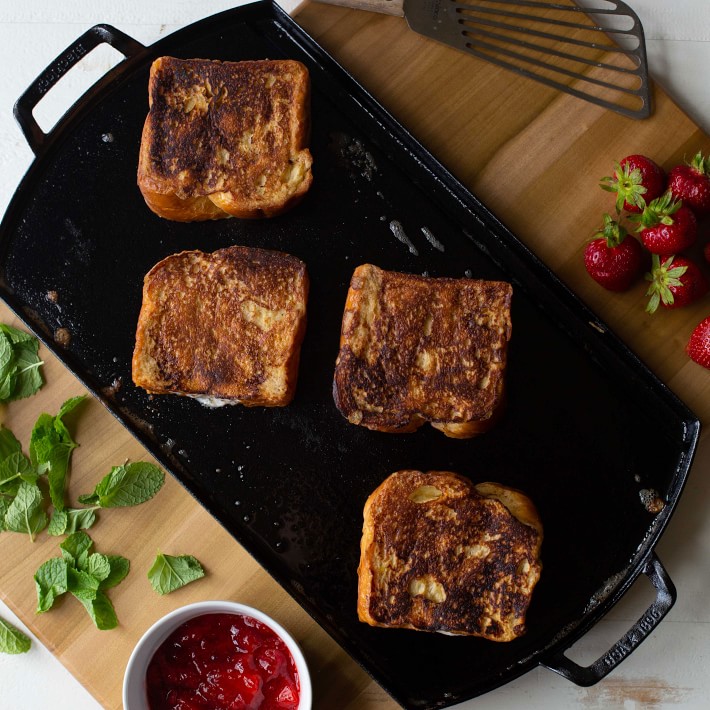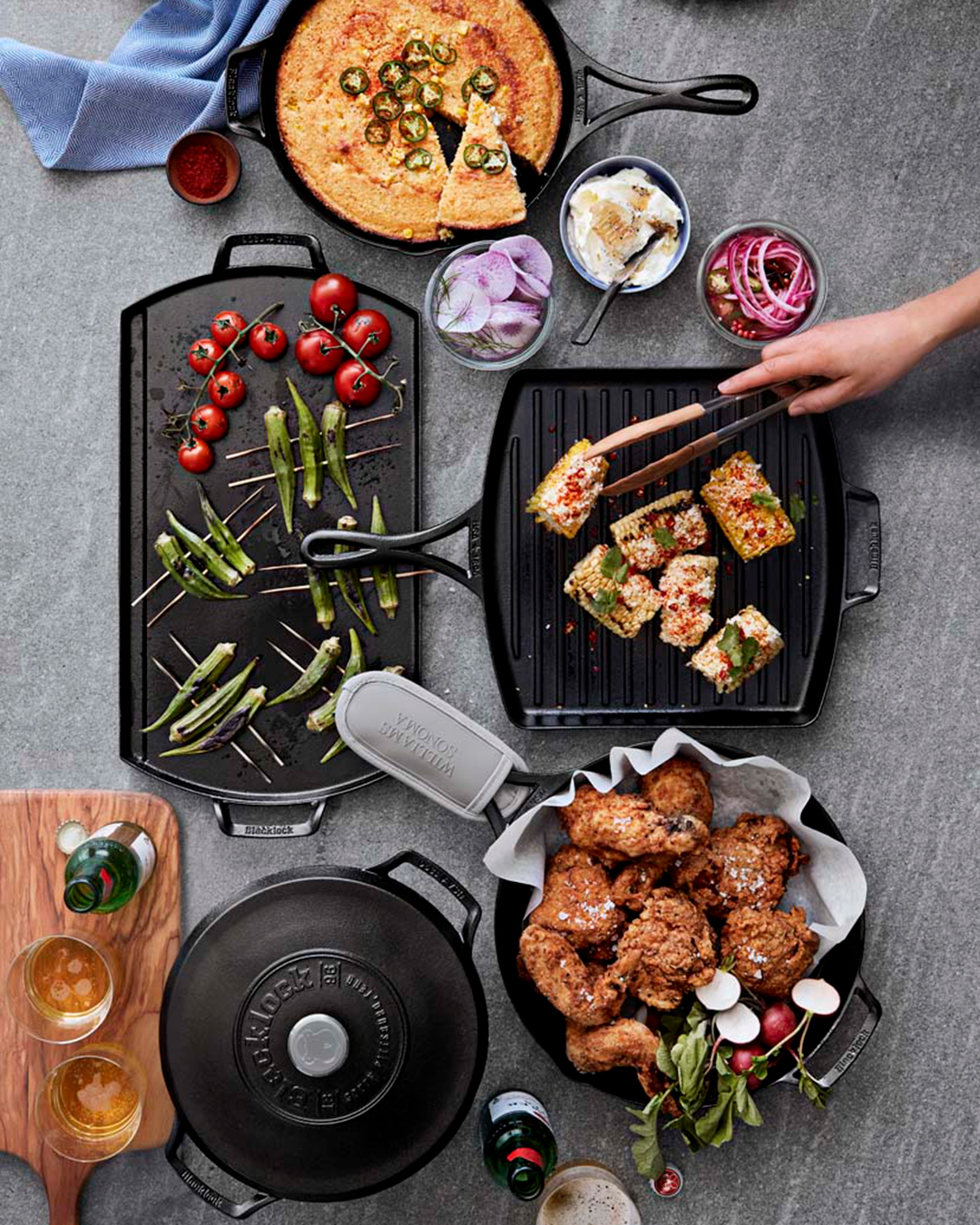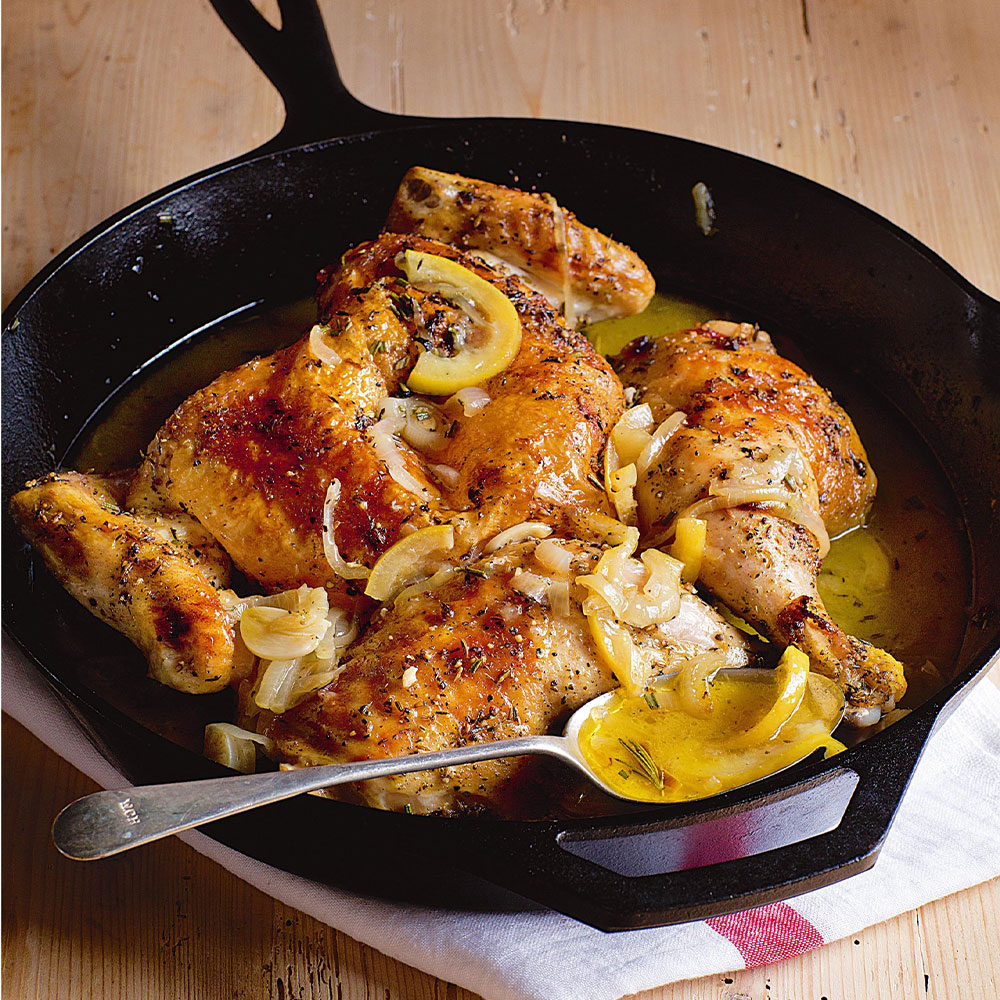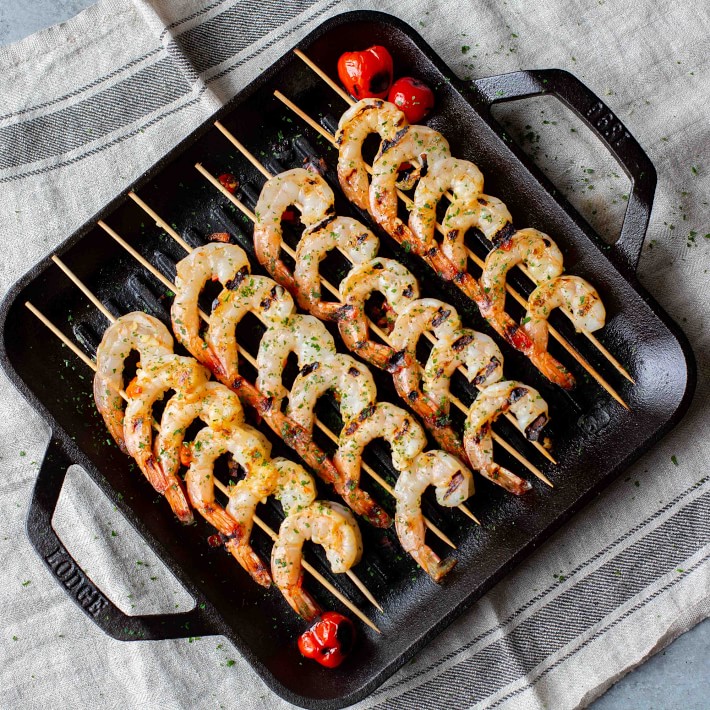Cast-iron: There is nothing like it for searing a steak or chop, making smashburgers, or anything else that requires a ripping-hot pan. And although you may have heard that they’re fussy, that’s just not true. When they’re pre-seasoned, as all of ours are, they’re a dream. (You don’t have to do any of that slather-with-Canola-and-make-a-mess-of-the-oven you’ve heard about.) We even sell kits to keep them in top condition.
We reached out to Lodge, one of our favorite cast-iron vendors, for all the info you need for how to store, clean and care for pre-seasoned cast-iron skillets, Dutch ovens, griddles, grill pans, saucepans, woks and sauté pans. Here it is, plus a few personal notes from brand chef Kris Stubblefield.
How to Store Cast-Iron Cookware
As Kris says, “You can never be too prepared,” so he keeps his 12-inch skillet “on the stovetop or in the oven at all times.” Cast-iron can be heavy, of course, so he has a sturdy, stainless-steel grid wall in his kitchen that he hangs “a dozen or so pieces from.” He considers it a functional art piece, and swaps out his cookware periodically. (For more of a peek at fun ways his colleagues store their cookware, go here!)
Don’t have one? No problem; the stovetop or a kitchen cabinet will do, so long as it’s a dry place. Do remember, though, that if you’re storing your cookware for a longer period of time, you should use a paper towel to separate the pieces. “The paper towel will absorb any excess oil or ambient moisture,” says Kris.
How to Use Cast-Iron Cookware
Pre-seasoned cast iron has a layer of oil baked on to it, which gives it a natural, easy-release finish. You’ll want to rinse and dry it thoroughly for the first use. For the first few uses (see below for more), you might need a little extra oil or butter, but it will quickly start to release foods very easily. And the seasoning improves the more you cook!
Kris points out that “any utensil is welcome, even metal,” because there “are no harmful coatings to scratch.” He uses his cast-iron for searing, baking, braising, roasting, frying and a whole lot more. If he’s cooking something acidic for a long period of time, he’ll reach for enameled cast-iron or a stock pot instead. (You’ll want to be cognizant that with tomatoes and some beans you should wait until your seasoning is well-established!)
Cast-iron works on glass-top stoves, and on any heat source—even over the smoldering coals of a campfire. It’s simple, feels rustic and grounding to use, and maintains heat flawlessly. (It is known for its even heating surface, typically free from “hot spots.”)
How to Clean Cast-Iron Cookware

After each use of cast-iron, simply wash by hand—Kris likes hot water, a little soap if needed, and a nylon brush—dry completely, then wipe with a thin layer of cooking oil. (Handles and all!) You don’t need much oil; Kris uses a very thin veneer. Then do try to remember to use a little extra oil (or cook something fatty, like bacon!) for the first few uses to enhance the stick-resistant cooking surface.
Keep in mind that it’s often easier to clean a warm (not hot!) pan. “As caked-on food cools it tends be a little harder to clean,” says Kris. Miss your moment, and have some baked-on food? He suggests you add a little water to your pan and bring it to a boil for about 30 seconds. Then, use a scraper to scrape the food away. If that doesn’t work, try a bit of soap, water and a soft scrubber. Dry promptly and wipe all over with a light layer of oil. Never soak your cast-iron, leave it in the sink or put it in the dishwasher. And remember that we have kits that make care even easier.
And here’s a lovely thought: “Properly maintained, cast iron will last generations,” says Kris. “Our cookware is one of the only things I can think of that will continue to get better as it ages.” He walks the walk, too: “The 12-inch skillet on my stovetop makes dinner for my family almost every night. I’m not its owner, I’m its caretaker for future generations. Each piece of cast iron in our home is an heirloom of the past or one for the future.” So keep that in mind with your forgiving, breathtakingly beautiful cast-iron, and hand it down for the next 100 years.




1 comment
[…] How to Use, Store and Care for Your Cast-Iron Cookware — Williams-Sonoma Taste […]